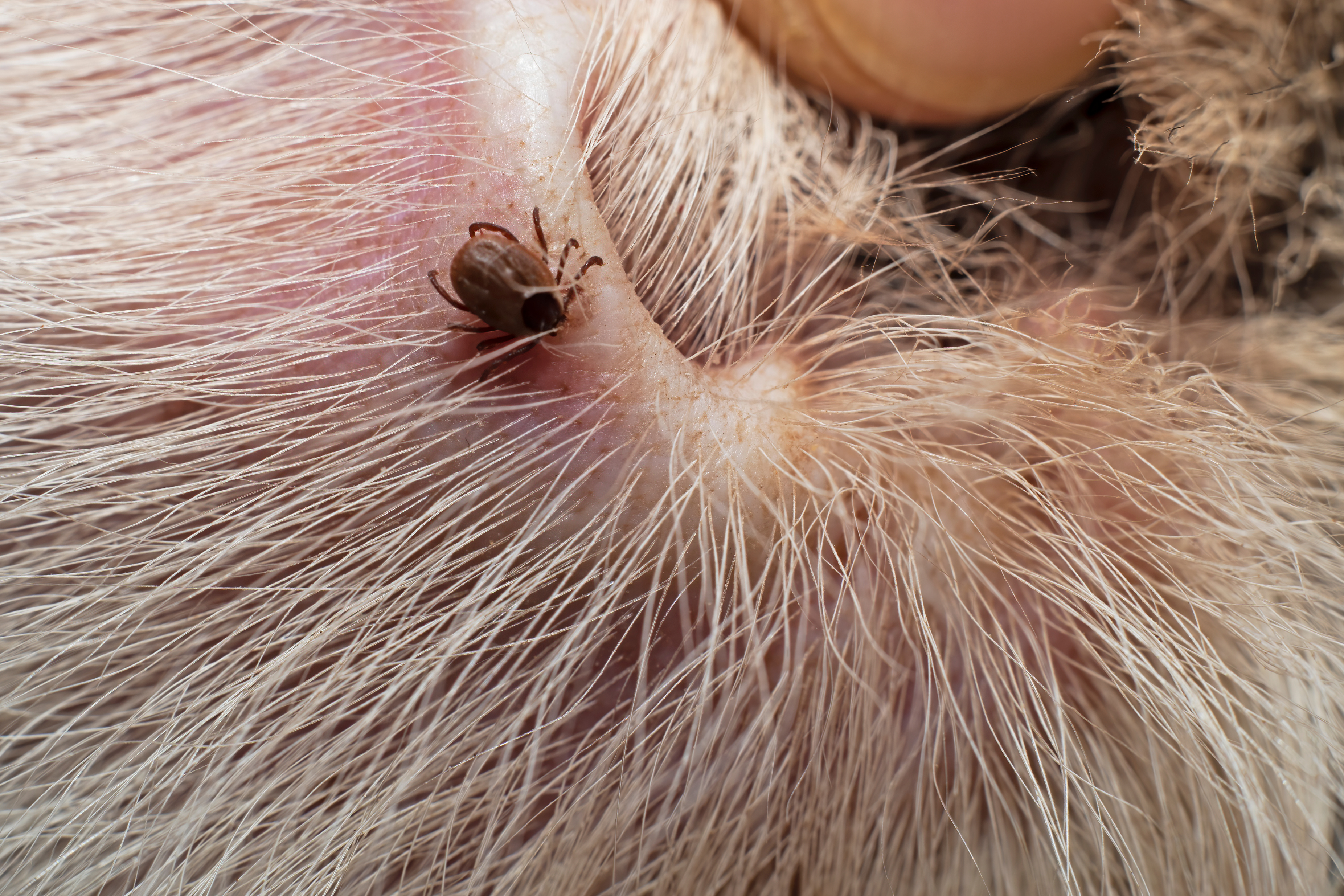Lyme disease, also called borreliosis, is a bacterial infection spread through the bites of ticks in dogs. It also affects humans, but humans do not contract it from dogs. It can create many health complications in dogs, including joint inflammation and kidney failure.
When a tick bites a dog, the bacteria (Borrelia burgdorferi) is transmitted from the tick’s saliva into the dog’s bloodstream. That bacteria can then infect the joints, heart, brain, and spinal cord. Dogs engaging in pet activities such as hiking or hunting are much more predisposed to exposure to ticks. Unvaccinated dogs or dogs not on frequent tick preventatives are at ideal risk.
Prevalence and Risk Factors
In the United States, 1.4%-13.3% of dogs test positive for Lyme disease. Lyme disease has been found from coast to coast in this country, but it is most prevalent in the Midwest, Northeast, Southeast, and West. Most cases are reported from spring through fall when ticks are most active.
Early treatment typically restores average lifespan in afflicted dogs. Consequently, if left untreated, conditions from Lyme disease can turn out to be life-threatening, for instance, kidney failure. Therefore, immediate veterinary attention is crucial if Lyme disease is suspected.

Lyme Disease Symptoms in Dogs
Lyme disease symptoms in dogs vary, depending on the immune response and the duration the infection has been in the body before treatment. Clinical symptoms may include:
- Joint pain or swelling
- Limping
- Elevated temperature
- Letharg
- Weakness
- Decreased appetite
- Swollen lymph nodes
- Vomiting and diarrhea
- More thirsty and urinating
- Loose weight
- Swollen legs or stomach
Causes of The Lyme Disease in Dogs
The primary vectors of Lyme disease in dogs are the deer tick (Ixodes scapularis) and the western black-legged tick (Ixodes pacificus). These are the ticks that become infected by feeding on rodents and birds that are known to be reservoirs for the bacteria. The bacteria multiply within the tick following attachment and are subsequently transmitted to the dog during another blood meal. To infect, the tick must be attached to the dog for at least 24 to 48 hours.

Diagnosing Canine Lyme Disease
Veterinarians diagnose Lyme disease with the assistance of several tests and discussions with the owner about recent activities and symptoms. Diagnostic tests include:
- SNAP 4Dx Test: Can detect antibodies in blood within eight minutes.
- Polymerase Chain Reaction (PCR): Tests blood, joint fluid, or lymph node samples for Lyme disease.
- Blood Work: The general state of health is reviewed, and other possible conditions are ruled out.
- Urinalysis: A test on urine components to ascertain kidney disease.
Management of Lyme Disease in Dogs Golden therapy, an antibiotic with doxycycline, is the treatment of choice and should be done for at least 30 days. Other antibiotics that mimic doxycycline are used in dogs sensitive to the same, like amoxicillin and cefovecin. For painful joints, analgesics like gabapentin are used. Very severe cases may require hospitalization, together with the need for intravenous fluids and supportive care.
By this time, most dogs should be showing improvement within 1 to 2 days after starting antibiotics; treatment, however, must be continued for a minimum of 30 days to completely eliminate the infection. Some dogs may remain lame if the disease is chronic or treatment is delayed. These benefit from a longer course of antibiotics and ongoing management of pain.
Preventing Lyme in Canines
Lyme disease is prevented by vaccinating and preventing tick exposure. Puppies should be vaccinated for Lyme at 12 weeks then again in three weeks, and after that annually. It is recommended that at-risk dogs receive topical or oral preventatives from products like Bravecto® or NexGard® year-round.
Key preventions are checking dogs for any ticks after each outdoor venture, removing them quickly when found, and finally avoiding tick-infested areas.





